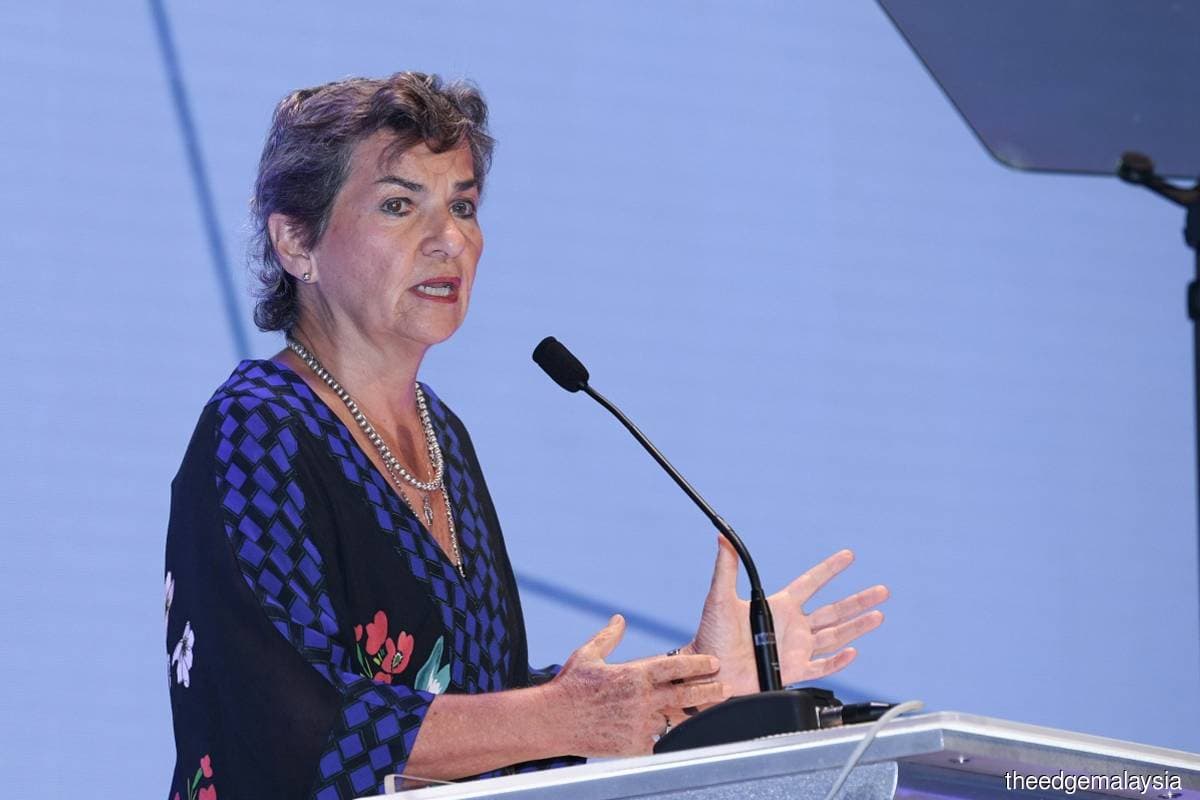
KUCHING (Sept 6): The United Nations Conference of Parties (UN COP) over the years was designed to bring countries together to make multilateral negotiations and agreements, which culminated in the Paris Agreement in 2015 that acted as a “business plan” to decarbonise the economy, said Dame Christiana Figueres at the Sustainability & Renewable Energy Forum (SAREF) 3.0 here on Wednesday.
However, the phase for negotiations is now done, and what is needed is the execution and implementation of the Paris Agreement, said Figueres, who was the executive secretary of the United Nations Framework Convention on Climate Change from 2010 and 2016, and the architect of the historic Paris Agreement.
Figueres was the keynote speaker of SAREF 3.0 in Kuching, Sarawak. She gave this observation in response to a question about her thoughts on COP28, which is due to take place on Nov 30 in Dubai.
“Any business plan, remarkable as it may be, if it stays on the shelf and is not financed and executed, is good for nothing. The Paris Agreement will be good for nothing if it is not financed and executed,” she said.
“Finance and execution is not the purview of the multilateral negotiations. The 90,000 people (attending COP28) are not government delegates. They are members of different corporations, non-governmental organisations, scientists and people who actually need to execute (the Paris Agreement) under the policies of their central or regional government.”
If the implementation is not done in a timely basis, “we would have committed general suicide. The planet doesn’t care because she has existed for 4.5 billion years and she will continue without the human race. It’s no longer about saving the planet, but returning to conditions that help us humans and other life to thrive. This is an emergency,” she said.
The 2020s is defined as the “decisive decade”, Figueres said, as humans hold the power to save the planet and the future. Right now, humankind is in a race between two exponential curves — the curve of destruction and of technological solutions.
The curve of destruction details the horrible impacts of climate change, while the curve of technological solutions reflects the positive changes that have been enabled through technology. It is concerning that there has been increasing evidence that the impacts of climate change around the world is alarming to scientists and is surpassing their predictions.
“The technological curve is improving exponentially. It’s a race between the two exponential curves and we don’t know which will win by 2030,” she said.
Figueres said that humankind abruptly moved into a new geological era in the 1950s. It used to take the planet millions of years to transition from one geological era to another, but humankind is now living in the Anthropocene era.
“For the first time, it is no longer nature holding the ‘pen of evolution’ but we humans who have stolen the ‘pen of evolution’ and we determine what is going to happen for the next seven generations down the line. That means it is a huge responsibility among all of us,” she said.
“Even without the benefits of climate change and emission reduction benefits, we have a moral, technological, financial and historical imperative to act on it.”
